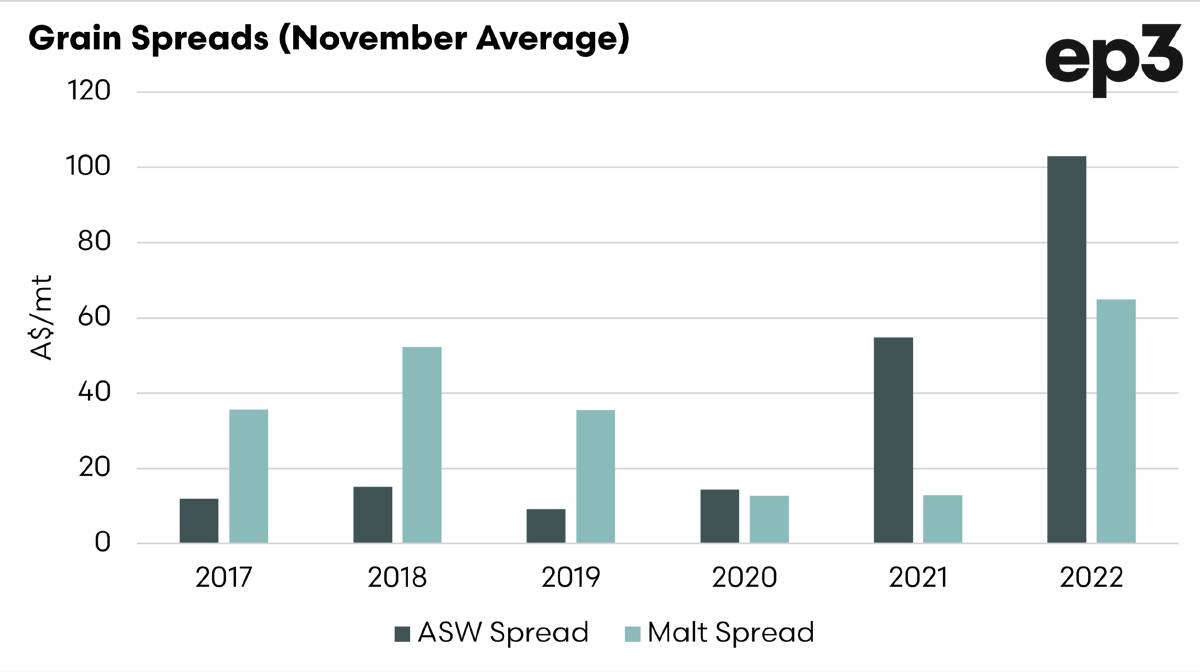
AN increase in the price spread between milling and feed grades of both wheat and barley is to be expected this season given the climatic conditions.
Subscribe now for unlimited access to all our agricultural news
across the nation
or signup to continue reading
With rain battering the Eastern States and showers also hitting large parts of the grainbelt in Western Australia over the past couple of weeks, protein levels in the grains will take a hit.
For wheat, that will lead to an abundance of lower grade grain, decreasing available high protein wheat as a percentage of the crop.
As a result, the discount from milling grades to feed will be larger than normal this season.
Ultimately, it is just basic economics - supply and demand.
If there's a large supply of anything, the price will go down, and as the supply of something else drops, the premium rises.
Episode 3 director Andrew Whitelaw said the trade now had to battle with a huge influx of lower quality wheat which would largely be destined for feed markets.
"A big supply of lower protein wheat makes the discount increase as the trade looks to get hold of whatever high protein is available for the milling industry," Mr Whitelaw said.
"This is already starting to occur, with current discounts to ASW growing dramatically (compared to APW)."
MORE STORIES:
While the spread is expected to be more prevalent on the east coast, it will flow through to WA, especially if more rain falls during harvest.
However, whether or not farmers can capitalise on the premium will depend on the grain they have available.
"When there are these large premiums, it's probably because the majority of farmers don't have any of that grade to sell," Mr Whitelaw said.
"The price that matters is the price for what they've got, which in a lot of cases will just be feed.
"So to a lot of farmers it's actually irrelevant."
It's a similar story for barley, with the spread between malt and feed expanding to a much larger premium that it was back in August.
However, at the moment feed is still high historically speaking and in comparison to the past 10 years.


